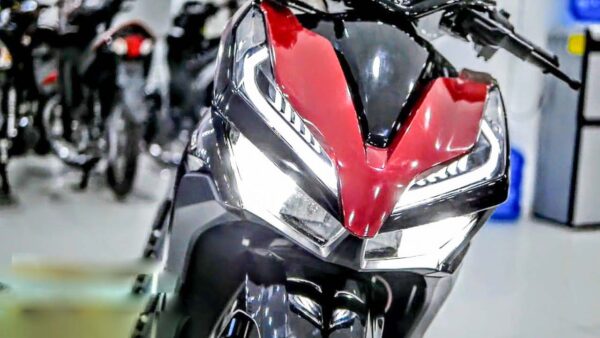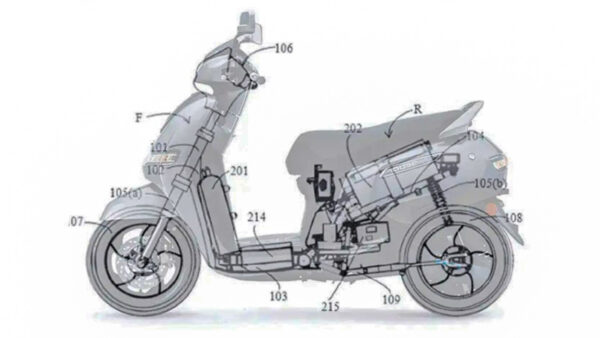TVS is the first mainstream two wheeler manufacturer to implement Hydrogen powertrain on a scooter prototype

TVS Motor sold 2,99,658 units in July 2022 constituting both domestic and export sales with a steady 14.06% growth YoY. TVS was in the spotlight recently because of the launch of their new motorcycle Ronin. They are back in the news, this time for a patent leak.
TVS is developing a new prototype scooter that is powered by hydrogen. You might have heard of hydrogen fuel-cell-powered cars like Toyota Mirai. Or other hydrogen-powered concept vehicles like Suzuki Crosscage and Honda’s unnamed prototype. This is probably the first time a mainstream two wheeler brand is trying something like this.
Yamaha, along with Toyota has designed a 100% hydrogen-powered V8 engine. But the concept of hydrogen fuel-cell on a modest scooter and aimed at masses, was unheard of. But TVS is implementing it on the iQube scooter with easy assembly and maintenance in mind. As good as EVs are, charging time is still a fly in the ointment. Hence, manufacturers have been slowly experimenting with substitutes. Honda is even working on flex-fuel technology too for budget vehicles.
TVS iQube Hydrogen
In the patent drawings of TVS iQube hydrogen, we can see the basic layout of the entire powertrain, except for the motor. We can see an electric battery at the floorboard which suggests that TVS might be considering hydrogen fuel cells as a range extender to an already existing EV platform.

Speaking of hydrogen, we can see two canisters holding this compressed gas at the front, held in place by the front downtube. Fuel cells are housed under the seat, where a battery would be in a conventional EV. We can also see other components required to regulate gaseous fuel like pressure regulator, flow-meter and shut-off valve, all taking their respective place near swingarm.
Hydrogen fuel cells are the party piece of this powertrain. It generates electricity when hydrogen is pumped into Anode and gets split by reacting with the catalyst to form electrons and protons. These electrons flow towards Cathode by completing the electrical circuit. Hence creating electric current to power the motor, and propel the vehicle. It doesn’t end there. At cathode, hydrogen and oxygen combine to form the by-product, water.
Implications Of Hydrogen In India
Hydrogen fuel cells promise zero carbon footprint like EVs. But negate the charging time and infrastructure that is currently plaguing EVs. Normal hydro-carbon fuel stations and existing fuel transportation systems can be readily used or slightly modified to accommodate hydrogen fuel supply and workflow. Looking at the upsides, most countries are considering hydrogen to be better than EVs.
But it is not all sunshine, though. Right now, hydrogen is vastly created by splitting water molecules with very high energy inputs. We are wasting a lot of electricity to make hydrogen and then we are using it to generate significantly less electricity to run the vehicle. The secondary losses are a lot more which EVs are not associated with. And coming to the “green” part, electricity to split water molecules comes from coal mostly and hydrogen is distributed by transportation burning diesel fuel. Hydrogen has potential, but we have to find an economical and renewable way to produce it and supply it.
Stay connected with us on social media platform for instant update click here to join our Twitter, & Facebook
We are now on Telegram. Click here to join our channel (@TechiUpdate) and stay updated with the latest Technology headlines.
For all the latest Automobiles News Click Here
